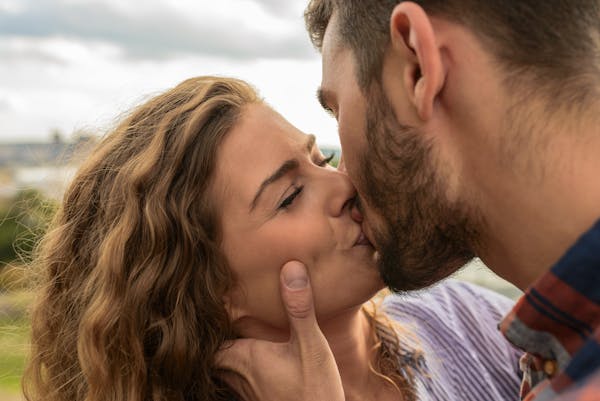Introduction
When it comes to first dates, communication extends beyond words. Body language plays a significant role in understanding the unspoken cues and signals that can provide valuable insights into your date’s thoughts, feelings, and level of interest. By paying attention to body language cues, you can gain a deeper understanding of your date’s comfort level, attraction, and overall engagement. In this article, we will explore key body language cues to help you decode the unspoken messages on a first date.
Eye Contact: The Window to Connection
Eye contact is a powerful indicator of interest and engagement. Pay attention to your date’s eye contact throughout the conversation. A consistent and comfortable level of eye contact suggests active listening and genuine interest. On the other hand, frequent avoidance of eye contact or excessively intense staring may indicate discomfort or disinterest.
Smile and Facial Expressions: Genuine Interest and Comfort
A warm and genuine smile is a positive sign that your date is enjoying the interaction. Notice if their smile reaches their eyes, as this indicates a true sense of happiness and connection. Look for other facial expressions as well. Raised eyebrows, relaxed forehead, and open expressions signify comfort and attentiveness.
Body Orientation: Alignment and Connection
The orientation of your date’s body can reveal their level of interest and engagement. If they are facing you directly, with their shoulders and feet pointing towards you, it indicates active participation and a desire for connection. Conversely, if their body is turned away or they consistently lean back, it may suggest disinterest or a lack of connection.
Posture: Confidence and Engagement
Pay attention to your date’s posture, as it can provide insights into their confidence and engagement. Someone who maintains an upright posture with their shoulders relaxed displays confidence and attentiveness. Slouching or crossed arms may indicate discomfort or defensiveness. However, keep in mind that nervousness can also impact posture, so consider the context and overall body language.
Touch and Proximity: Comfort and Connection
Physical touch and proximity are powerful indicators of comfort and connection. Notice if your date initiates light touches or leans in closer during the conversation. These actions suggest a desire for physical closeness and can be a positive sign of attraction. However, it’s essential to respect personal boundaries and only reciprocate if you’re comfortable.
Gestures and Body Movements: Engaging and Expressive
Observe your date’s gestures and body movements. Animated hand gestures and open, expressive movements suggest enthusiasm and engagement in the conversation. Mirroring of your gestures or subtle synchrony in movements can indicate a subconscious desire to connect and establish rapport.

Fidgeting and Nervous Habits: Anxiety or Discomfort
Nervous habits and fidgeting can provide clues about your date’s level of anxiety or discomfort. Tapping fingers, fidgeting with objects, or repetitive movements may indicate nervousness. It’s important to differentiate between nervousness due to attraction or anxiety stemming from discomfort. Create a comfortable environment to help alleviate anxiety and encourage openness.
Microexpressions: Unveiling True Emotions
Microexpressions are brief, involuntary facial expressions that can reveal true emotions. These fleeting cues are often difficult to detect but can provide valuable insights. Pay attention to subtle changes in facial expressions like raised eyebrows, slight frowns, or momentary smiles, as they can reveal your date’s genuine reactions and feelings.
Vocal Cues: Tone and Pace
Beyond body language, vocal cues can offer additional insights into your date’s state of mind. Listen to the tone of their voice, as a warm and engaged tone indicates interest and enthusiasm. Notice the pace of their speech as well; a fast pace may suggest excitement, while a slower pace may indicate thoughtfulness or nervousness.
Context and Clusters: Overall Assessment
It’s important to consider body language cues in conjunction with the context of the date and clusters of behaviors. A single gesture or cue may not provide the full picture, but when multiple cues align, they offer a more accurate assessment of your date’s thoughts and emotions. Look for consistent patterns of body language to form a well-rounded understanding.
Conclusion
Decoding body language cues on a first date can help you better understand your date’s thoughts, feelings, and level of engagement. By paying attention to eye contact, smiles, body orientation, posture, touch, gestures, fidgeting, microexpressions, vocal cues, and overall context, you can gain valuable insights beyond verbal communication. Remember to interpret body language cues in conjunction with the individual’s personality and cultural background, as these factors can influence their nonverbal communication. Stay observant, but also maintain an open and genuine connection through active listening and authentic engagement.

